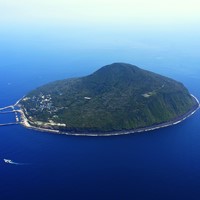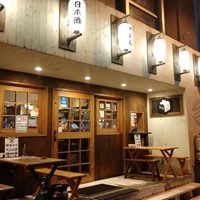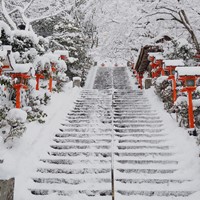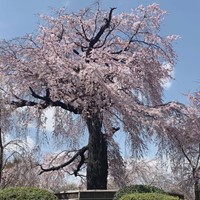Discovering Atami: Japan's Coastal Gem of Hot Springs, Culture, and Natural Splendor
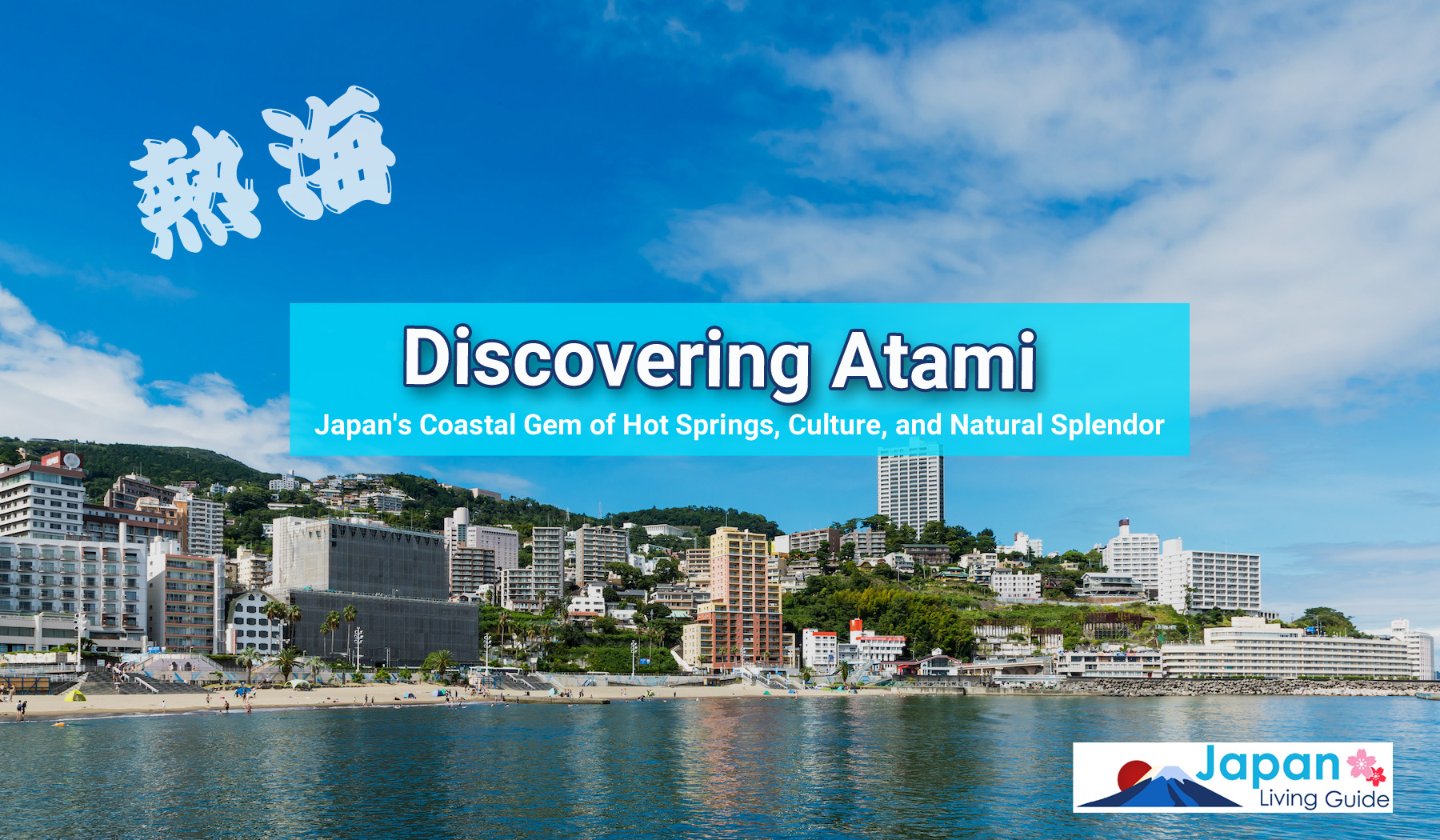
Atami is a picturesque coastal city in Shizuoka Prefecture, Japan. It is located on the Izu Peninsula's eastern coast, facing the Pacific Ocean's Sagami Bay. For centuries, Atami has been a popular hot spring resort destination, known for its therapeutic onsen (hot spring) waters.
The origin of the name "Atami," written with the characters for "hot sea (熱海)," is said to come from the intense boiling of hot springs emerging from the sea, turning the seawater into scalding hot water. Originally called "Atsumigasaki (あつうみが崎)," it gradually transformed into "Atami."
Atami, still beloved by many business leaders, entertainers, and artists, remains a vibrant city that stimulates creativity and imagination for all who visit. Atami provides a perfect blend of natural beauty and leisure opportunities, whether for hot spring relaxation, beach activities, or cultural experiences.
Where is Atami?
Atami is a coastal city located in Shizuoka Prefecture, Japan. It is situated along the eastern coast of the Izu Peninsula, facing the Sagami Bay of the Pacific Ocean. Atami is conveniently located just 40-50 minutes away from Tokyo by Shinkansen (bullet train), making it a popular day trip destination.
History of Atami and Hot Springs
The city's history as a hot spring retreat dates back to the 8th century, and it was especially popular during the Edo period (1603-1868), when many prominent samurai and feudal lords visited the area for relaxation and healing. Atami Onsen has been cherished by successive shoguns of the Tokugawa shogunate, starting with Tokugawa Ieyasu. Ieyasu visited Atami and underwent a seven-day hot spring treatment. The third shogun, Tokugawa Iemitsu, also desired to experience the therapeutic benefits of Atami's hot springs, leading to the construction of Atami Goten (Atami Palace) near the present-day Atami City Hall.
Furthermore, the fourth shogun, Tokugawa Ietsuna, initiated the practice of transporting Atami's hot spring water, known as "Okumi-yu," all the way to Edo Castle. This tradition of fetching the hot spring water was continued by subsequent Tokugawa shoguns. During the reign of the eighth shogun, Tokugawa Yoshimune, records show that 3,643 barrels of hot spring water were transported over a period of nine years, from 1726. Even after Tokugawa Ieyasu's time, Atami Onsen has been cherished by people for a long time.
In the Meiji era, even imperial family members and influential figures in politics and finance built villas in Atami. Renowned literary figures such as Natsume Soseki, Tsubouchi Shoyo, and Tanizaki Junichiro stayed or relocated to Atami, creating numerous literary masterpieces.
Tourist Attractions in Atami
Atami is conveniently close to Tokyo and attracts a lot of tourists. These attractions showcase the diverse charm of Atami, making it a perfect place to experience its beauty and attractions.
Atami Castle
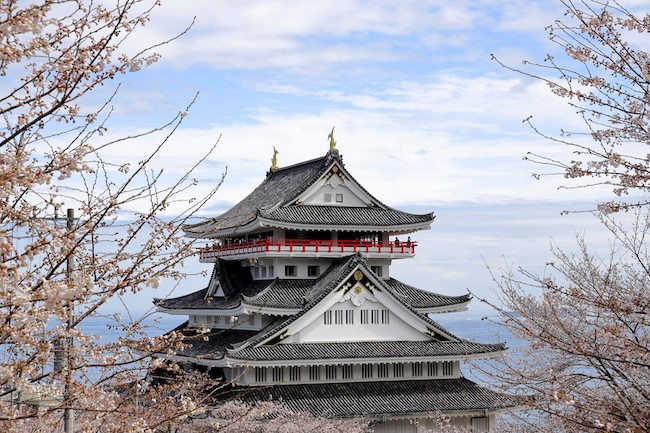
Located in the scenic area of Nishikigaura, Atami Castle stands tall and houses various exhibits such as the Samurai Culture Museum and the Japanese Castle Exhibit. The 360-degree panoramic view from the Observation Tower captures visitors' attention.
Atami Castle (Atamijo) is not a historical castle that actually existed. It was constructed in 1959, imitating the appearance of a 5-story external and 9-floor internal tower commonly seen in Japanese castles, at an elevation of 100 meters above sea level. From the tower, adorned with a golden shachihoko, you can enjoy sweeping views of Atami City, Hachijojima, Oshima, and Sagami Bay.
Inside, each floor offers various exhibits to enjoy, such as the "Samurai Culture Museum," which displays armor and weaponry, and the "Japanese Castle Exhibit," showcasing various aspects of Japanese castles. Known as a famous cherry blossom spot, over 200 cherry trees bloom in abundance during spring, while in summer, the tower offers special viewing during the annual Atami Sea Fireworks Festival, allowing visitors to experience a sense of being feudal lords.
Atami Fireworks Festival
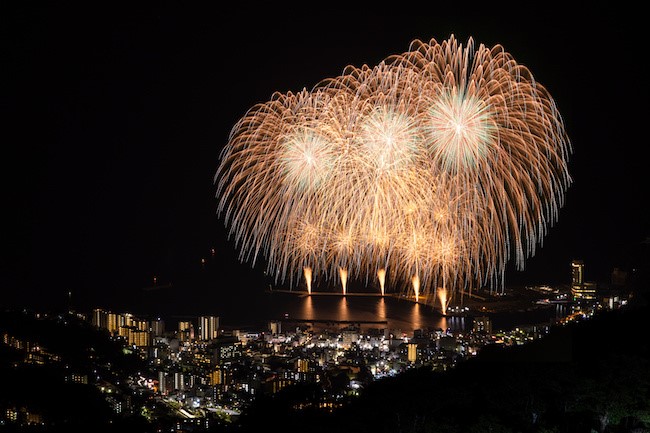
This historic fireworks, Atami Fireworks Festival began in 1952, is held more than ten times a year throughout the year, making it an event unique to Atami. The exploding fireworks reverberate in Atami Bay, using the three sides of the surrounding mountains in the topographic form of grinding mortar, creating sound effects that resemble a large stadium. The full impact of 5000 fireworks launched into the night sky and reflected in the ocean water is a sight not to be missed. The sky-like "Niagara Falls" finale is a must-see.
Atami Hot Springs
The hot springs of Atami, cherished for centuries, are a favorite destination for tourists seeking relaxation and rejuvenation.
>> Medical effects of hot springs and rules of bathing in English
Izusan Shrine
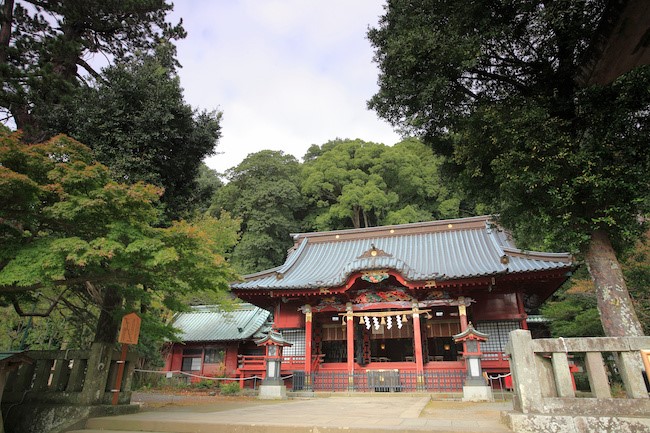
Izusan Shrine, which is also the birthplace of the place names in Izu, is famous as a shrine for matchmaking due to its association with Minamoto no Yoritomo and Hojo Masako's marriage. During the Edo period, it was known as Izu Daigongen and holds a historical significance as a shrine visited by Tokugawa Ieyasu as well.
Address: 708-1 Izusan, Atami, Shizuoka
Atami Sun Beach
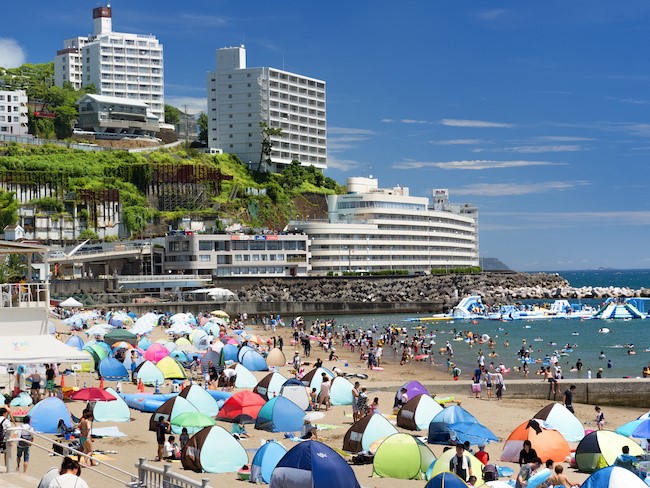
Atami Sun Beach is a popular beach with easy access, perfect for families to enjoy swimming and strolling along the shoreline. The beach offers beautiful sandy shores and scenic ocean views, making it popular among beach lovers and water sports enthusiasts.
Address: Higashikaigancho, Atami, Shizuoka
Atami Plum Garden
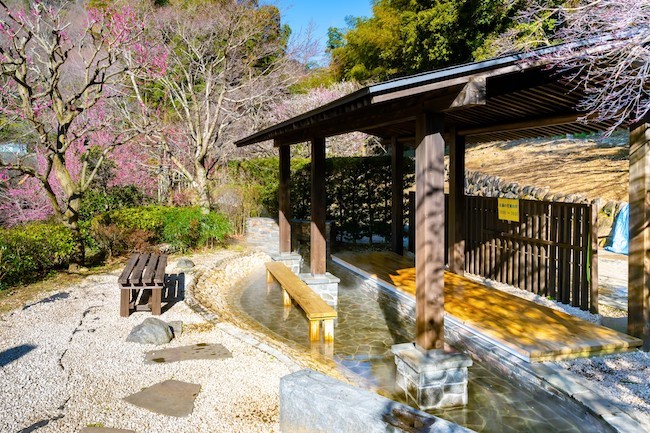
Atami Plum Garden, known for having "Japan's Earliest Blooming Plum," opened in 1886. Every year, from late November to early December, the first plum blossoms of the season bloom.
With 469 plum trees of 60 different varieties, including old trees over 100 years old, the garden proudly displays its abundant blooms. The plum blossoms follow a sequence of "Early-Blooming → Mid-Blooming → Late-Blooming," providing an extended period of enjoyment for visitors to appreciate the plum flowers.
Address: 8-11 Baiencho, Atami, Shizuoka
MOA Museum
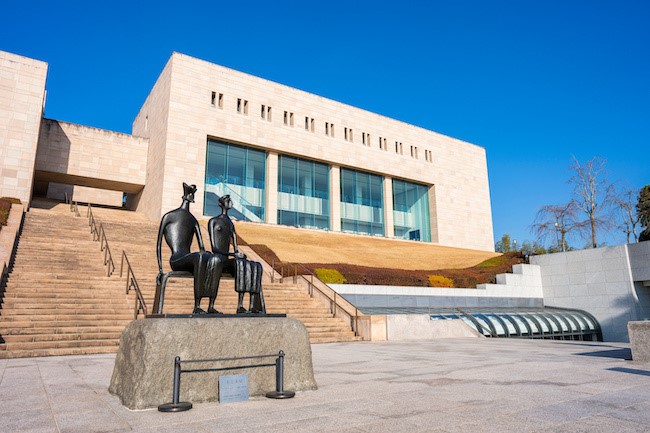
Representing Atami, MOA Museum is dedicated to East Asian art, encompassing approximately 3,500 exhibits with a focus on paintings, calligraphy, and crafts. It proudly houses three national treasures, sixty-seven important cultural properties, and forty-six important art pieces. The museum is perched on an expansive 70,000 tsubo (approximately 231,000 square meters) highland of Atami. From the main lobby and the Muar Square within the museum, visitors can indulge in stunning views of Izu Oshima, Hatsushima, and other picturesque landscapes.
Address: 26-2 Momoyama-cho, Atami, Shizuoka
If you would like to learn more about Atami, please check "VISIT ATAMI".
